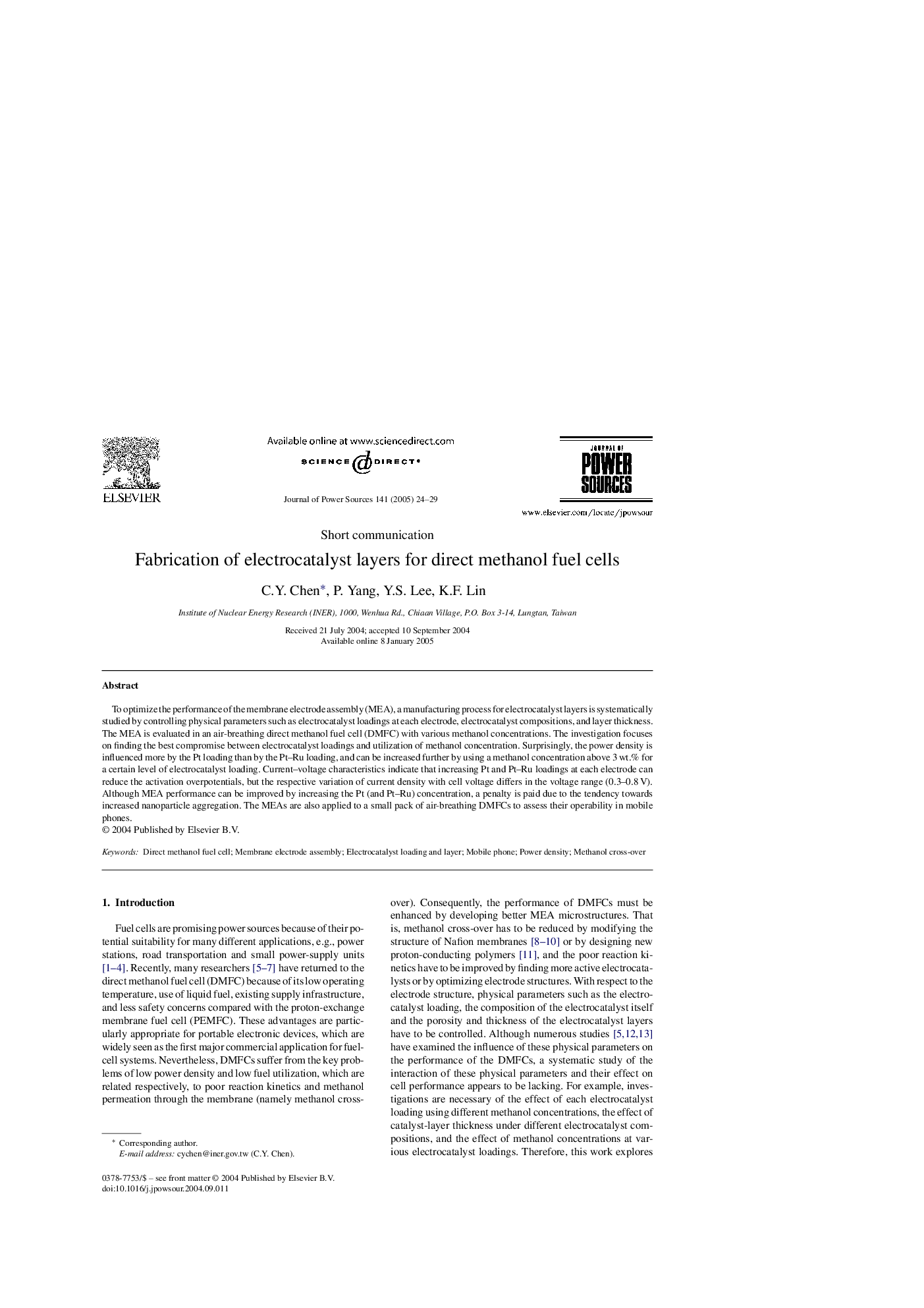| Article ID | Journal | Published Year | Pages | File Type |
|---|---|---|---|---|
| 10568409 | Journal of Power Sources | 2005 | 6 Pages |
Abstract
To optimize the performance of the membrane electrode assembly (MEA), a manufacturing process for electrocatalyst layers is systematically studied by controlling physical parameters such as electrocatalyst loadings at each electrode, electrocatalyst compositions, and layer thickness. The MEA is evaluated in an air-breathing direct methanol fuel cell (DMFC) with various methanol concentrations. The investigation focuses on finding the best compromise between electrocatalyst loadings and utilization of methanol concentration. Surprisingly, the power density is influenced more by the Pt loading than by the Pt-Ru loading, and can be increased further by using a methanol concentration above 3Â wt.% for a certain level of electrocatalyst loading. Current-voltage characteristics indicate that increasing Pt and Pt-Ru loadings at each electrode can reduce the activation overpotentials, but the respective variation of current density with cell voltage differs in the voltage range (0.3-0.8Â V). Although MEA performance can be improved by increasing the Pt (and Pt-Ru) concentration, a penalty is paid due to the tendency towards increased nanoparticle aggregation. The MEAs are also applied to a small pack of air-breathing DMFCs to assess their operability in mobile phones.
Keywords
Related Topics
Physical Sciences and Engineering
Chemistry
Electrochemistry
Authors
C.Y. Chen, P. Yang, Y.S. Lee, K.F. Lin,
